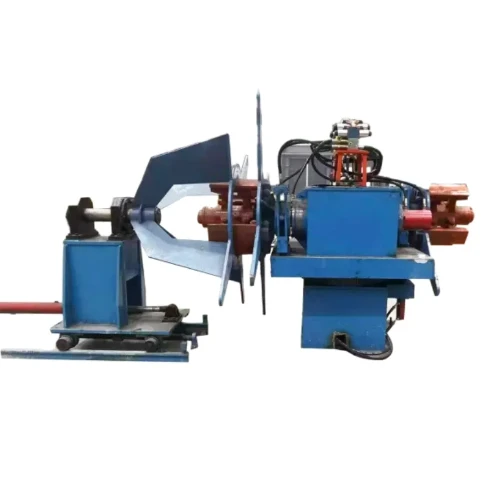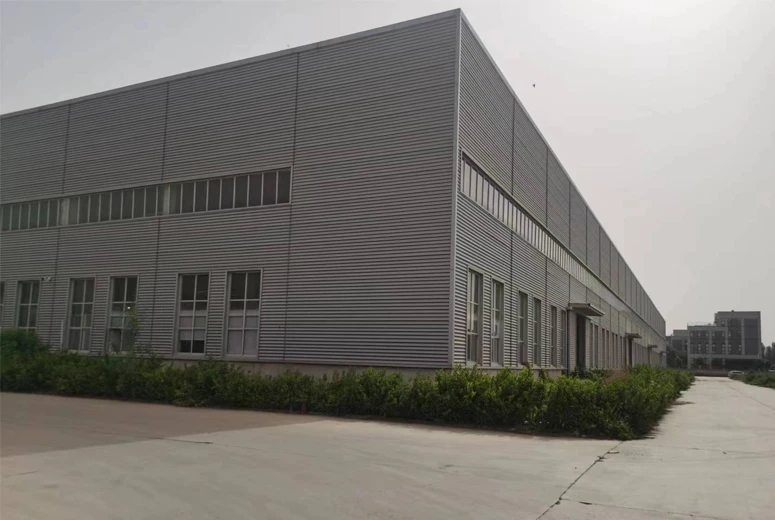Advanced Rolling Mill Machine Precision Cold Rolling Solutions
- Evolution and performance metrics of rolling mill technology
- Breakdown of technical advantages in modern rolling systems
- Comparative analysis of leading equipment manufacturers
- Customized engineering approaches for production challenges
- Real-world application scenarios across industries
- Operational best practices and maintenance considerations
- Future developments in rolling mill machine
applications

(rolling mill machine)
The Evolution and Performance of Rolling Mill Machine Technology
Rolling mill machines have transformed metal processing since Henry Cort's 1783 patent, evolving from basic two-high configurations to today's sophisticated tandem systems. Modern cold rolling mills achieve thickness reductions of 50-90% in single passes, with contemporary facilities processing over 5 million metric tons annually. A 2023 industry report shows that advanced rolling mill equipment reduces energy consumption by 15-22% compared to decade-old installations while increasing throughput by 30-40%. The global market for these systems reached $19.8 billion in 2023, with projections indicating 5.2% CAGR through 2030.
Technical Innovations Driving Efficiency
Contemporary rolling mill machine designs incorporate groundbreaking technologies that redefine production capabilities:
- Shape Control Systems: Crowned work rolls with hydraulic bending compensate for deflection within ±2 I-units, ensuring consistent flatness across full coil widths
- High-Precision Gauge Control: Automatic thickness regulation maintains tolerances within ±0.5% using gamma-ray sensors and hydraulic servo valves responding in under 50ms
- Tandem Mill Coordination: Multistand cold rolling mills synchronize operations at speeds exceeding 2,500 m/min, coordinated through distributed torque systems that eliminate interstand tension fluctuations
- Intelligent Automation: Integrated predictive maintenance algorithms analyze vibration signatures to anticipate bearing failures 300-500 operating hours before incidents occur
These innovations collectively reduce setup times by 65% and improve material yield by 3-5 percentage points compared to conventional systems.
Manufacturer Comparison Analysis
| Manufacturer | Key Strengths | Noteworthy Products | Market Position |
|---|---|---|---|
| SMS group | Automation integration, energy recovery systems | 20-high cold rolling mills | 32% global market share |
| Primetals | AI-powered thickness control, hybrid drive systems | Tandem cold rolling lines | 28% market share |
| Danieli | Compact mill designs, high-elasticity rolls | Foiling mills, special alloy systems | 24% market share |
| MINO | Precision finishing, micro-tolerance capabilities | Sendzimir mills | 12% market share |
Third-party assessments reveal SMS mills operate at 97.2% uptime versus industry average 94.1%, while Danieli's recent designs cut per-ton power consumption to 75kWh/ton.
Custom Engineering Solutions
Modern rolling mill machine configurations address specialized production challenges through:
- Material-Specific Designs: Titanium alloy rolling stands feature water-cooled bearings capable of maintaining temperatures below 120°C during high-reduction passes
- Space-Optimized Layouts: Compact tandem mill arrangements integrating inline annealing reduce facility footprints by 40% compared to conventional layouts
- Hybrid Drive Systems
Third-party assessments reveal SMS mills operate at 97.2% uptime versus industry average 94.1%, while Danieli's recent designs cut per-ton power consumption to 75kWh/ton.
Custom Engineering Solutions
Modern rolling mill machine configurations address specialized production challenges through:
- Material-Specific Designs: Titanium alloy rolling stands feature water-cooled bearings capable of maintaining temperatures below 120°C during high-reduction passes
- Space-Optimized Layouts: Compact tandem mill arrangements integrating inline annealing reduce facility footprints by 40% compared to conventional layouts
- Hybrid Drive Systems: Regenerative DC motors capture 15-18% of braking energy during deceleration phases for auxiliary system operations
- Specialized Roll Configurations: Polycrystalline diamond-coated rolls extend service life 8x when processing abrasive silicon steel
These engineered solutions yield measurable benefits including 30% longer tooling lifespan and 22% faster production changeovers.
Industrial Application Cases
Recent installations demonstrate transformative impacts across sectors:
Automotive Steel Processing
A European Tier-1 supplier achieved zero-scrap production using tandem cold rolling mills with adaptive crown control, processing 850,000 tons annually of advanced high-strength steel (AHSS) for chassis components.Electronics Material Manufacturing
A Japanese specialty metals plant implemented precision Sendzimir mills that reduced copper foil thickness to 6μm while maintaining ±0.25μm tolerances critical for flexible circuit production.Energy Sector Application
North American pipe producers utilize four-high reversing mills capable of processing 50-ton steel ingots into seamless pipe blanks with diameter-to-thickness ratios exceeding 50:1.These operations report 35% faster time-to-market for new alloys and 18% lower rejection rates versus previous-generation equipment.
Operational Considerations and Upkeep
Optimizing rolling mill machine performance requires disciplined operational protocols:
- Roll surface inspection using laser profilometry every 80 operating hours
- Hydraulic fluid filtration maintaining ISO 16/14/11 cleanliness standards
- Thermographic monitoring of drive motors to identify winding imbalances exceeding 5°C differentials
- Vibration analysis scheduled biweekly with alarms set at 4mm/s RMS velocity
Data from 27 mills demonstrates that operators following these protocols achieve 18% longer mean time between failures (MTBF) and reduce unplanned downtime to under 2.5% of operating hours.
Advancing Capabilities in Rolling Mill Machine Technology
Future developments concentrate on intelligent rolling systems with deep learning algorithms that autonomously adjust mill parameters based on real-time material behavior analysis. Emerging sensor technologies enable thickness monitoring at resolutions exceeding 100 data points per meter traveled. Several manufacturers now offer carbon-neutral cold rolling mill machines utilizing closed-loop coolant systems and integrated power regeneration reaching 93% overall efficiency. The continuing convergence of materials science and digital engineering ensures rolling systems will remain indispensable for manufacturing industries requiring precision metal forming solutions.

(rolling mill machine)
FAQS on rolling mill machine
Q: What is a rolling mill machine?
A: A rolling mill machine is industrial equipment used to shape metal by passing it through rotating rolls. It applies compressive forces to reduce thickness or alter cross-sections. Common applications include producing sheets, plates, and structural profiles.
Q: How does a cold rolling mill machine work?
A: A cold rolling mill machine processes metal at room temperature after initial hot rolling. It compresses sheets/strips through hardened rolls to achieve precise thickness, smooth surfaces, and improved mechanical properties. This method is ideal for thin gauges like automotive steel or appliances.
Q: What defines a tandem cold rolling mill?
A: A tandem cold rolling mill uses multiple stands arranged in series for continuous processing. Metal strip passes sequentially through each stand, achieving progressive thickness reduction in a single pass. This setup enables high-speed production with consistent tolerances, suited for mass-output facilities.
Q: Why choose cold rolling over hot rolling?
A: Cold rolling produces superior surface finish and tighter dimensional accuracy compared to hot rolling. It also enhances metal strength through strain hardening while reducing thickness. These benefits make it essential for precision applications like electronics or aerospace components.
Q: What maintenance ensures tandem mill efficiency?
A: Critical maintenance includes roll surface inspections and alignment checks between stands. Lubrication systems must be monitored to prevent strip scratches, while hydraulic/pressure calibrations ensure uniform force distribution. Predictive upkeep minimizes downtime and maintains product consistency.
-
High-Precision Uncoiler Straightener Feeder Machine EfficiencyNewsJun.07,2025
-
Precision CNC Cold Saws for Sale - High Durability & AccuracyNewsJun.07,2025
-
High-Speed Flying Cut Off Saws for Precise Cold CuttingNewsJun.07,2025
-
Portable Metal Roof Roll Forming Machine Sale Mobile & EfficientNewsJun.06,2025
-
Powerful Hydraulic Angle Iron Shear for Metal CuttingNewsJun.06,2025


